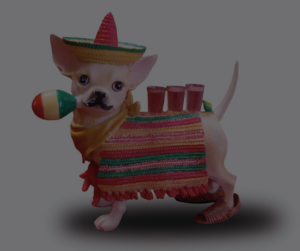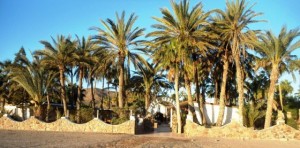
April 3, 2013 – Here we are at Mario’s in Guerrero Negro on Day 23 only a few days left and we will be back in the US heading home. It has now cooled down considerably, however we expect it to be much hotter tomorrow in Bahia. After arriving we learned that Ron & Mary Ann are dropping off and continuing northward, we will say our goodbyes at the junction to Bahia de Los Angeles. This evening we had a farewell dinner at Mario’s Restaurant which many dropped bye for dinner and drinks, we will miss them, they have been great company. Everyone will miss Jo Jo for sure! At the same time shortly after setting up I came out the side door of the restaurant and office and found a pup, very hungry and really not able to fend for itself, yes we have a new dog, hopefully not for long. We have called him Mario for now, we will see how this works out, anyone who wants Mario please speak up!
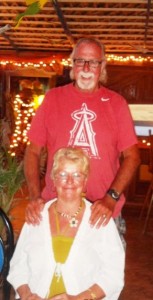
Last evening we went to Ray’s Place in the Mulege Valley for dinner and the seafood plate was fabuloso! The drive was a little rougher in spots with a couple of unexpected water features but we made it which was the objective. Ray was his usual gracious self, always a terrific host and the staff very attentive which is the norm. After we got settled in the courses started to roll out, first the goat cheese, then fish entrees, next green salad with freshly baked buns, then the main course, steak or seafood plate which included lobster, lastly the dessert. Ray’s is an experience everyone will fondly remember for some time.
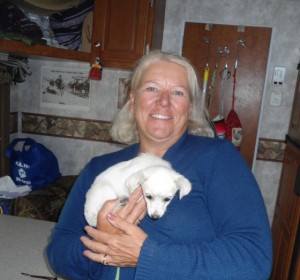
Our time in Mulege was busy however everyone had a chance to enjoy the hospitality of the Hotel Serenidad and some even met the owner Don Johnson. Many ate breakfast, lunch or dinner in the hotel, some went swimming and everyone certainly experienced the character of this Baja icon open for over 50 years. Ida was busy in town with the groups laundry and the vendors did well as sales were brisk, I saw Rob & Terry briefly in town, very happy to report recovery from her fall appears to be on track, no more neck brace. Everyone had fun with the tour of Loma Linda, the Mission and valley overlook, climb to the lighthouse and former prison (now museum) and walk about this village of 3200.
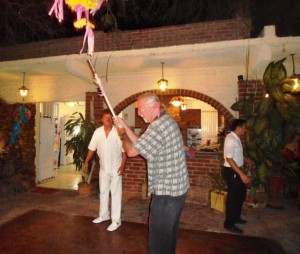
A couple of days earlier we had been in La Paz and went for dinner at Los Tamarindos downtown. The atmosphere in this garden restaurant is very unique and the dancers were terrific, some of the RVers had a chance to participate in the traditional dances and take a swing at a Pinata, what a hoot! The food was good except the duck, on reflection we cannot ever seeing duck on a Baja menu and can only ever recall seeing ducks in San Ignacio in the lagoon. We will make sure to advise folks not to order duck next time, it was a foul choice. The good news is I was able to try the beef ribs; FYI Darrel they were quite tasty!
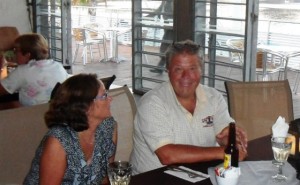
Our leisurely Sunday drive from La Paz to Puerto Escondido was busy with the locals returning from the beach to home, I had hoped they would sleep in and get a later start, no such luck. We made it to Puerto Escondido without incident got set up and relaxed, I even had a chance for a siesta. Dinner at Porto Bello in the Marina was good although it did take awhile getting out the food out, I must remind Pedro to change this process prior to our return. The restaurant has a great view of the harbour and boats, plus good WiFi. Most were up early to see sunrise, the reddish colour of the escarpment is just stunning at first light.
Tomorrow we cross into Baja California and off Bahia de Los Angeles.
Did you know?
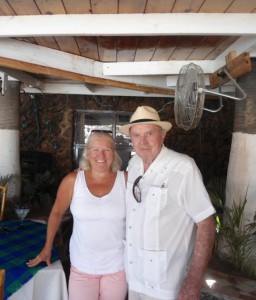 Cuauhtémoc-Moctezuma Brewery (Cervecería Cuauhtémoc-Moctezuma) is a major brewery based in Monterrey, Nuevo León, Mexico, founded in 1890 and is now part of Heineken International. The company operates brewing plants in Monterrey, Tecate, Navojoa, Guadalajara, Toluca, Orizaba and, beginning in 2012, Chihuahua, with an annual production of 3.09 GL (gigalitres).
Cuauhtémoc-Moctezuma Brewery (Cervecería Cuauhtémoc-Moctezuma) is a major brewery based in Monterrey, Nuevo León, Mexico, founded in 1890 and is now part of Heineken International. The company operates brewing plants in Monterrey, Tecate, Navojoa, Guadalajara, Toluca, Orizaba and, beginning in 2012, Chihuahua, with an annual production of 3.09 GL (gigalitres).
The founders of Cuauhtémoc brewery were José Calderón Muguerza, José A. Muguerza, Francisco G. Sada Muguerza, Alberto Sada Muguerza, Isaac Garza Garza (brother in-law of Francisco and Alberto, married to their sister Consuelo Sada Muguerza), Joseph M. Schnaider, and Wilhelm Hasse, with capital of 150,000 pesos, starting with the Carta Blanca brand. Cuauhtémoc brewery produced its first beer barrel in 1893 and won first prize in the Chicago and Paris world fairs. During the Mexican Revolution (1910-1921), the original founders supported Victoriano Huerta. This resulted in his rival Venustiano Carranza, seizing the brewery, and the founders’ families subsequently fled to Texas. They re-acquired the brewery through the intervention of US and Russian diplomats after Huerta captured Carranza and had him executed.
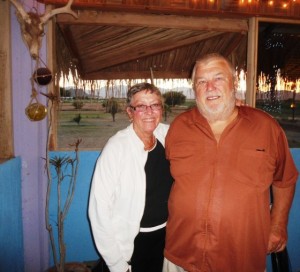
The Sociedad Cuauhtemoc was founded in 1918 to provide medical and educative services to the workers’ families; the final objective was to provide a welfare system to avoid strikes and the working day was reduced from twelve to nine hours. By 1936 the holdings of the Garza, Calderon and Sada families and their associates were divided into two groups: the Cuauhtemoc (brewery) group and the Vidriera (glass) group. During the 20th century, Cerveceria Cuauhtemoc Moctezuma was headed by Jose Calderon Muguerza and the two Garza Sada brothers Eugenio Garza Sada (assassinated in 1973 in a kidnapping attempt by Mexican left-wing guerrillas) and Roberto Garza Sada. In 1943, company executive Eugenio Garza Sada with his brother and other prominent people founded the Monterrey Institute of Technology and Higher Education (ITESM), and in 1973, the Mexican Professional Baseball Hall of Fame was opened at the site of the company headquarters.
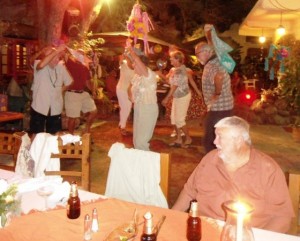
When oil prices fell dramatically in 1981, Mexico’s economic boom, financed with borrowed money, abruptly halted. Visa found itself more than $1 billion in debt the following year, and the federal government nationalized Banca Serfin—the nation’s third-largest bank—in which Visa held a 77 percent stake. The non-deposit banks and associated financial companies in Grupo Financiero Serfin, not nationalized, were reorganized into a new financial-services group called Valores de Monterrey (Vamsa). Vamsa’s life-insurance subsidiary, Seguros Monterrey, was the largest in Mexico. Adding to Visa’s problems was dissatisfaction within the extended family. Javier Garza Sepulveda, who owned 47 percent of the holding company, tried unsuccessfully to wrest Visa from Eugenio, and Gabriel widow, who only had part of the rest, after all their brothers, sister Alicia, and some other cousins sold all their stock to Javier Garza. He filed several suits charging Eugenio with fraud, mishandling the administration of the conglomerate but was ultimately unsuccessful in winning control due to the Mexican corrupt judicial system. In 1991 Garza Calderon’s father, Javier Garza Sepulveda, tried to gain control of Visa through his Grupo Gentor .
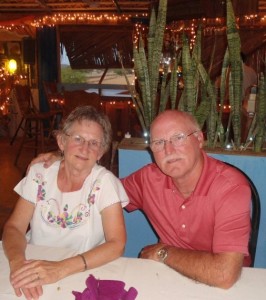
In 1988 Fomento Económico Mexicano, S.A. de C.V. was formed as the main subsidiary of Visa containing the beer and other companies. In 1994 FEMSA sold a 22 percent share of its beer business to John Labatt Ltd. of Canada and signed an agreement with Labatt to associate their respective companies in the United States. FEMSA became the successor of Visa in 1998 and on January 11, 2010, the Dutch brewing company Heineken International announced it would acquire the beer activities of FEMSA, including Cuauhtémoc Moctezuma Brewery.
The company produces a range of pale and dark lagers, some of which are available only in Mexico and include:
Carta Blanca, the brewery’s original premium beer. Carta Blanca takes its name from the French “carte blanche.”
Sol introduced in the 1890s, originally called El Sol. Sol is for sale in four sizes in Mexico: 500 ml (16.91 U.S. fl oz; 17.60 imp fl oz), 355 ml (12.00 U.S. fl oz; 12.49 imp fl oz) cans, 325 ml (10.99 U.S. fl oz; 11.44 imp fl oz) bottles and 940 ml (31.79 U.S. fl oz; 33.08 imp fl oz), this last is known as Caguama. New variations from Cerveza Sol include: Sol Brava (a dark beer in a light dark bottle), Sol Light, Sol Sal y Limón (Sol with lime and salt) and Sol Cero (non-alcohol beer).
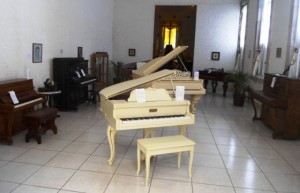
Indio is produced in has six sizes: Aluminium can 325 ml (10.99 U.S. fl oz; 11.44 imp fl oz), 355 ml (12.00 U.S. fl oz; 12.49 imp fl oz)-not refundable and 325 ml (10.99 U.S. fl oz; 11.44 imp fl oz) bottles plus a refundable and not-refundable .5 litre bottle, a refundable 1.00 litre bottle and a 1.25 litre refundable bottle.
Bohemia which takes its name from the Czech region. It is pale pilsner, although recently a new dark Vienna beer has been launched as Bohemia Obscura. In addition, Cuauhtémoc Moctezuma has added a craft-style wheat beer to the line – “Bohemia Weizein” a German Kristallweizen which was released in summer 2011.
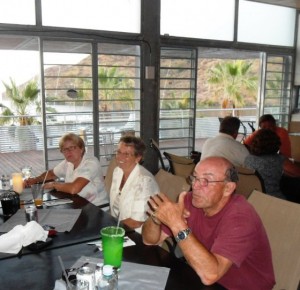
Dos Equis is a lager that was originally brewed by the German-born Mexican brewer Wilhelm Hasse in 1897. The brand was named Siglo XX (“20th century”) to commemorate the arrival of the new century, and the bottles were marked with the Roman numeral for 20 (“XX”), thus “Dos Equis” which is Spanish for “two X.” The main brand Dos Equis XX Special Lager is a 4.45% abv pale lager sold in green bottles. Dos Equis XX Amber is a 4.7% Vienna-style amber lager sold in brown bottles, and was first exported to the United States in 1973.
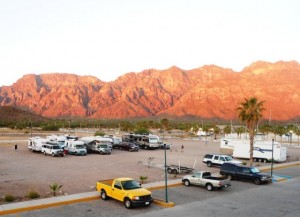
Tecate and Tecate Light are popular pale lagers named after the city of Tecate, Baja California, where they were first produced in 1943. Originally brewed by a local company, Tecate was acquired by Cuauhtémoc Moctezuma in 1955. Tecate is sold in both distinctive red aluminium cans and in twist-top bottles. Tecate Light was launched in 1992 by Héctor Emilio Ayala, who was at the time the plant project manager.

